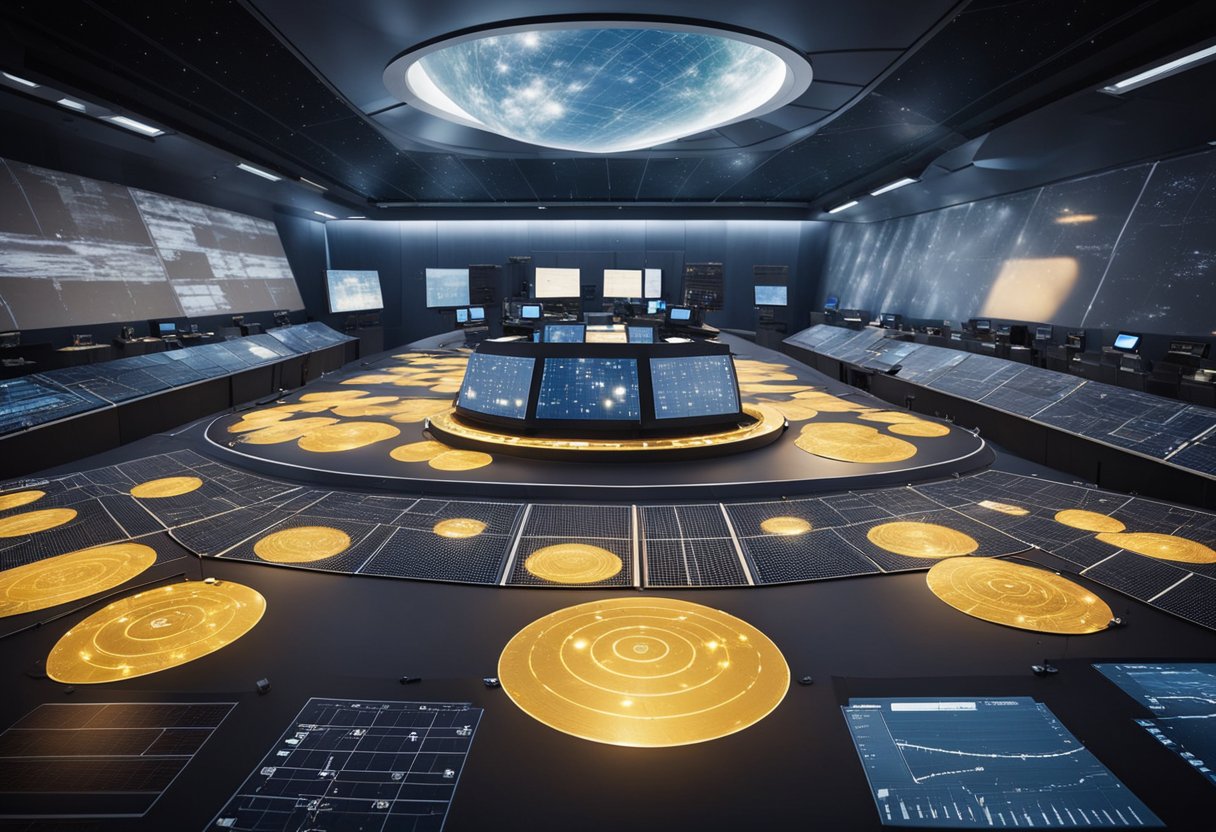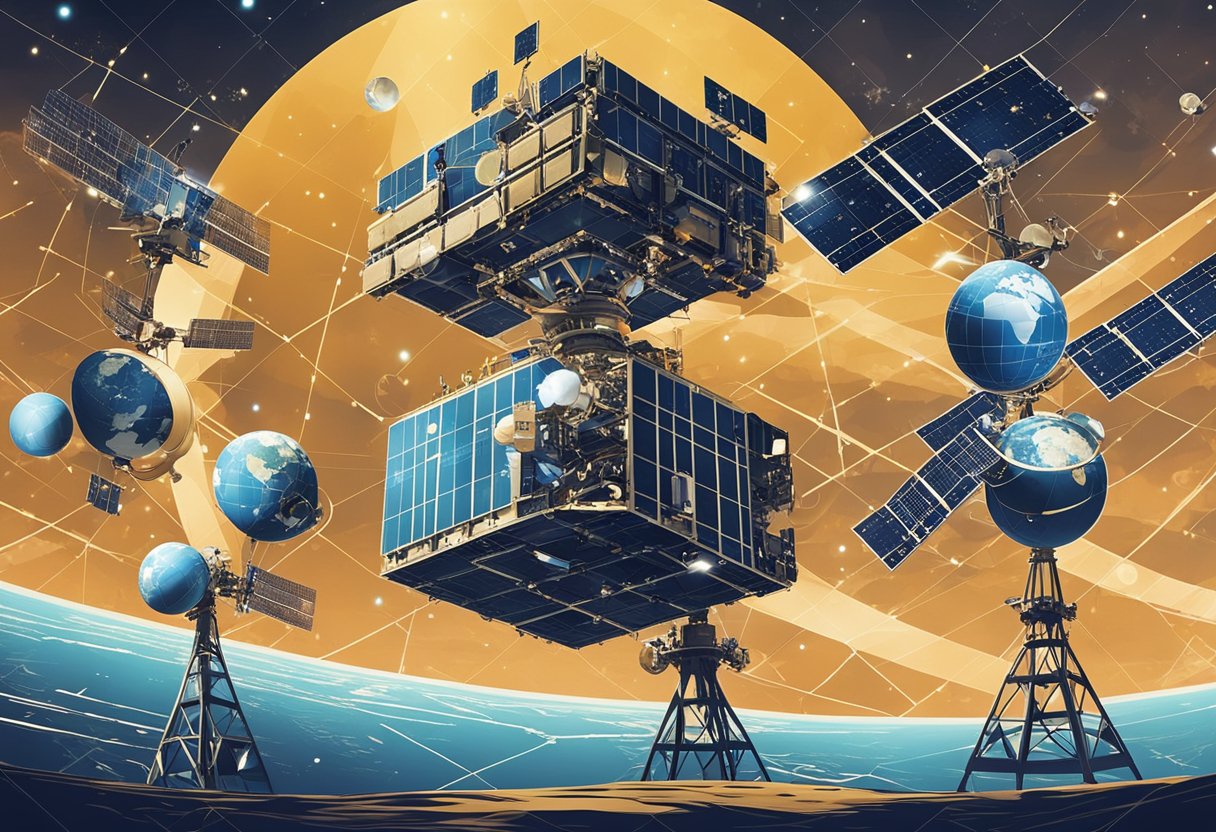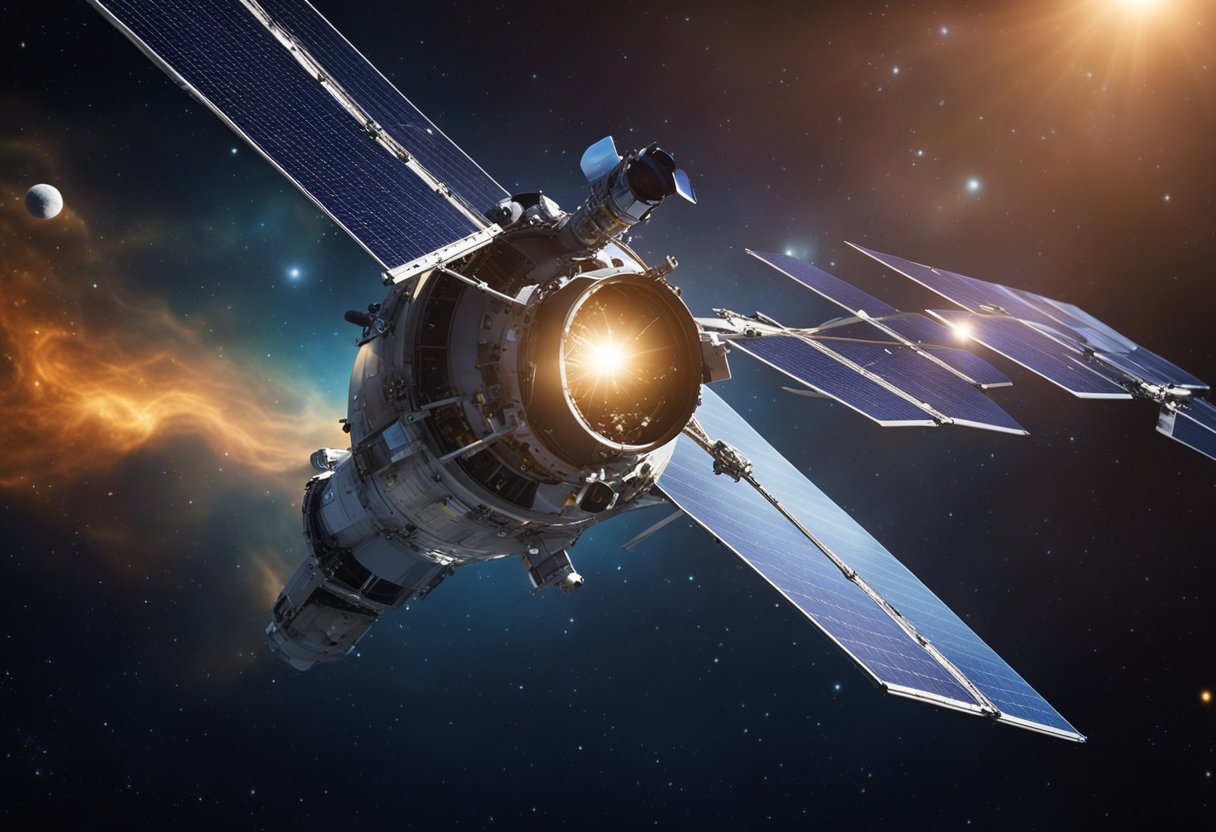
Space weather monitoring has become a critical part of our modern society, as it helps us understand the intricacies of solar activity and its effects on our planet. With advancements in technology, we are now better equipped to observe and predict the conditions in space that may impact human activities, particularly those related to the ever-increasing reliance on technology. Charged particles from the Sun, such as those emitted during a solar flare, can disrupt satellite operations, affect GPS navigation, cause power outages, and even pose risks to astronauts. By keeping a close watch on space weather phenomena, we can mitigate these risks through timely forecasting and protective measures.

Our efforts in monitoring space weather also include preparing for and protecting against the potential impacts on emerging industries such as space tourism. With new ventures on the horizon, like SpaceVoyageVentures.com, which explores the burgeoning field of space tourism, there is a growing need to educate the public and industry stakeholders about the importance of space weather. Understanding the intricacies of space weather not only helps in planning secure and successful space voyages but also ensures the safety of the technology and infrastructure that support these thrilling journeys beyond our atmosphere. As we look towards the future, space weather monitoring stands as a fundamental aspect of expanding our presence in space, and it requires international cooperation to develop robust protection strategies and effective forecasting models.
Space weather encompasses a series of conditions that are driven by the Sun’s activity, affecting everything from satellite operations to power grids on Earth. Our understanding of space weather is crucial for protecting technology and infrastructure both in orbit and on the ground.
The Sun is the primary source of space weather. A continuous stream of solar wind, a flow of charged particles, permeates the solar system. This wind carries with it the Sun’s magnetic field, extending far beyond the planets. At times, the Sun releases bursts of energy in the form of solar flares and coronal mass ejections (CMEs). Solar flares are intense bursts of radiation, while CMEs are massive bubbles of gas and magnetic field that are ejected from the Sun’s corona.
The Earth’s magnetosphere, an area dominated by our planet’s magnetic field, acts as a shield against solar activity. However, during periods of intense solar events, the increased flow of protons and other charged particles can penetrate the magnetosphere. This can cause disturbances in the atmosphere and lead to geomagnetic storms. Such events can disrupt communications, navigation systems, and even cause damage to satellites and electrical grids.
To effectively monitor space weather and its potential impacts, especially as we navigate the early stages of space tourism with initiatives like SpaceVoyageVentures.com, we devote our attention to observing the Sun’s behaviour and forecast its influence on the near-Earth environment. The information gleaned from these observations is vital for planning and operating both current and future space endeavours safely.
In order to ensure a robust understanding of the space environment, we utilise both terrestrial and extraterrestrial technology to monitor the conditions that stem from the Sun and permeate the Solar System.
Ground-based instruments are pivotal in our observation of space weather phenomena. These include magnetometers that measure the Earth’s fluctuating magnetic fields and spectrographs that analyse the Sun’s radiation. Continuously we track the Kp index, which indicates the geomagnetic activity around Earth. Our observatories also maintain a vigilant count on sunspot numbers, a key indicator of solar activity levels, essential for anticipating solar events.
Satellites like DSCOVR and ACE play a crucial role as our sentinels in space. Positioned at the Lagrange point L1, they offer a strategic vantage for monitoring solar wind speed and proton flux, which influence space weather predictions. These metrics allow us to assess the intensity of oncoming geomagnetic storms and issue timely warnings to safeguard satellite operations and power networks on Earth.
Satellites are instrumental in our endeavour to sustain a high level of preparedness for space weather events, not only for technological infrastructure but also for future ventures such as those promoted by SpaceVoyageVentures.com. Our continued vigilance in monitoring these celestial dynamics is essential for the advancement of human activities in space and the protection of our technologically dependent society.
Space weather has a significant impact on various technology systems that we rely on, from communication to navigation and satellite operations. By understanding these impacts, we can better prepare for potential disruptions.
Space weather events can disrupt HF (high-frequency) radio communications by causing sudden ionospheric disturbances. This leads to the signals being degraded or completely blocked, a phenomenon known as a radio blackout. During such events, emergency services, aviation, and maritime operations that depend on HF radio for long-distance communication can experience significant challenges.
Our navigation systems, particularly GPS (Global Positioning System), depend on low-frequency signals that can be affected by space weather. Fluctuations in the Earth’s ionosphere can cause signal delays, leading to inaccuracies in positioning data. This poses risks for our high precision requirements in industries such as aviation and maritime, where exact coordinates are crucial for safety.
Satellites in orbit are exposed to intense space weather conditions, which can damage onboard electronics or degrade satellite signals. Prolonged exposure to solar radiation can reduce a satellite’s operational lifespan. Spacecraft, on their way to destinations like those documented on SpaceVoyageVentures.com, also face the threat of solar flares and charged particles, which can impair navigation systems and communications, and pose risks to onboard astronauts.
By comprehensively monitoring space weather conditions, we can mitigate the risks to our technological systems and ensure a higher degree of reliability in the face of solar disturbances.

The interplay between space weather events and human activities is both intricate and profound. We witness these effects on critical systems like power grids and aviation, where the influence of geomagnetic storms and solar activity can be considerable.
We understand that geomagnetic storms induced by solar activity can produce ground-induced currents. These currents have the potential to disrupt power transmission infrastructure, leading to voltage regulation problems and, in extreme cases, transformer damage. For instance, during significant geomagnetic events, perturbations in the Earth’s magnetic field can cause fluctuations in electrical currents, posing a hazard to power grid stability.
Reliable forecasting of space weather is thus vital, aiding grid operators to prepare and mitigate the impacts of these disruptions.
The safety of aviation operations, particularly on transpolar routes, can be compromised due to space weather phenomena. During heightened solar activity, aurora can interfere with high-frequency radio communications, essential for aircraft flying at high latitudes. Additionally, navigation systems reliant on GPS can experience disruptions, leading to safety hazards.
We are keenly aware of these issues and strive to improve space weather monitoring to enhance the safety and efficiency of aviation operations.
In this section, we’ll explore the intricate processes and systems used in predicting space weather events that have the potential to affect space-borne and ground-based technological systems.
Forecasting space weather is a crucial activity that supports the mitigation of risks posed by solar activity to satellites, astronauts, and technological infrastructure. The NOAA’s Space Weather Prediction Centre (SWPC) is a primary entity for providing timely forecasts. These predictions help us to prepare for space weather conditions that can disrupt communications, navigation systems, and even power grids on Earth. By utilizing a range of space weather scales, such as the R1-R5 scale for radio blackouts and the S1 or greater scale for solar radiation storms, we’re able to classify the severity of space weather phenomena and communicate potential impacts effectively.
We rely on sophisticated space weather prediction models to anticipate various space weather events. These models analyse solar observations and historical data to predict geomagnetic storms and other conditions with as much accuracy as possible. For instance, SWPC provides a G1 minor prediction, indicating potential minor effects on our satellite operations and power grids. By keeping a close watch on the NOAA scales and advancements in predictive technology, we ensure a proactive response to these cosmic disruptions. Ongoing refinements of these models aim to improve the lead time and reliability of forecasts for the benefit of sensitive sectors like aerospace and communications, as well as new industries like space tourism, represented by sites such as SpaceVoyageVentures.com.

In monitoring space weather, it’s crucial to understand the scales used to rate various phenomena. These ratings help us assess the potential impact on both terrestrial systems and future space tourism ventures.
Space weather scales are designed to classify the intensity of space weather events. They range from R1 to R5 for radio blackouts, S1 and greater for solar radiation storms, and G1 to G5 for geomagnetic storms. An R1 level denotes minor degradation of high-frequency communication on the sunlit side of the Earth, while R5 means complete collapse of such communications. In the case of solar radiation storms, S1 events can lead to potential minor impacts on satellite operations, while events S5 or greater could pose serious risk to astronaut safety and could cause deep charging of satellite electronics.
When applying the ratings in real-life situations, we must consider their immediate and downstream effects. During R1 and R2 events, we witness weak or minor degradation of HF radio signals at high latitudes. At levels R3 to R5, we could experience occasional loss of radio contact and significant GPS issues, which are vital for navigation. At the S1 stage, our satellites may have to contend with an enhanced level of radiation, leading to brief intervals of potential anomalies. Ratings of S2 and above warn us of more pronounced effects, potentially impacting satellite operations and space tourism activities that we eagerly monitor at sites like SpaceVoyageVentures.com. This site provides a glimpse into current and near-future space travel opportunities, which require careful monitoring of these scales to ensure the safety and reliability of space trips.
In applying these ratings to real-time scenarios, we give due diligence to potential system impacts, from power grid fluctuations to space travel disruptions, ensuring we’re prepared for any level of space weather activity.

As we delve into the specifics of space weather protection strategies, it’s evident that safeguarding our technology and infrastructure from cosmic phenomena like geomagnetic storms is paramount.
Understanding Geomagnetic Storms: We firstly recognise the importance of detecting and forecasting geomagnetic disturbances. These disturbances stem from solar activity influencing Earth’s magnetosphere and can severely disrupt satellite operations.
Shielding Satellites: To mitigate the impact on satellites, we employ specialised materials and designs to shield sensitive electronic components from the adverse effects of solar radiation and charged particles.
By meticulously applying these strategies, we enhance our resilience to space weather’s potent effects. Our endeavours bolster security for ventures like SpaceVoyageVentures.com and ensure the safety of assets and operations that are integral to the advancement of space exploration and tourism.

International collaboration is essential in the study and monitoring of space weather to safeguard critical infrastructure and ensure the safety of space-borne and ground-based activities.
We observe a commitment by organisations worldwide to enhance space weather monitoring through various global initiatives and agreements. The World Meteorological Organization (WMO) plays a pivotal role by coordinating international efforts to support the protection of life, property, and critical infrastructures. Moreover, space weather impacts transcend national borders, necessitating a cooperative approach for effective mitigation.
International Partnerships:
Strategic Agreements:
The European Space Agency (ESA) serves as a cornerstone in the European contribution to monitoring space weather. ESA’s involvement includes the commissioning of in-situ measurement tools within Earth’s magnetosphere to boost economic efficiency, as detailed in their space weather network plans. The agency’s strategic use of hosted payload instruments on various spacecraft emphasises the innovative and collaborative spirit of the European approach to space weather surveillance.
European Contributions:
We recognise that the intricate tapestry of international partnerships, where entities like ESA and NOAA take centre stage, is vital for progressing space weather understanding and the safety of our increasingly space-dependent society.
In order to ensure that individuals and organisations understand and can adequately respond to space weather phenomena, we must prioritise the dissemination of knowledge and the facilitation of access to real-time space weather information.
We acknowledge the importance of timely alerts that can advise users about potential space weather events. These alerts are disseminated through an established space weather service network which includes governmental and academic institutions. Our aim is to provide users with a diverse range of options for receiving these alerts, such as email, mobile applications, and dedicated web portals.
Furthermore, the data service responsible for these alerts employs the latest technology to monitor events that could influence Earth and near-Earth environments, including solar flares and geomagnetic storms. This enables end-users in vulnerable sectors like telecommunications and satellite operations to take precautionary measures to mitigate adverse impacts.
We endeavour to make space weather information services as accessible as possible. Our focus is not only on the accuracy of the data but also on its comprehensibility for the general public. To achieve this, we provide simplified user interfaces on our websites and visualisations that can explain complex phenomena in an intelligible manner.
For example, data concerning extreme ultraviolet (EUV) solar emissions, which are crucial in understanding and predicting space weather, is presented in a format that is easy to interpret. Subsequently, these services support educational initiatives, such as the Space Weather Research, Education, Development Initiative (SW REDI), which aims to bring comprehensive space weather knowledge to a broader audience.
Our partnerships with emerging ventures like SpaceVoyageVentures.com illustrate our commitment to keeping space tourists well-informed about space weather. Our collaboration ensures that this audience, too, has access to tailored advice and space weather service resources that are particularly relevant for their unique trip preparations.

The evolution of space weather monitoring is crucial for both our technological society and the burgeoning industry of space tourism, such as documented by SpaceVoyageVentures.com. Our ability to predict solar storms and their potential impacts on Earth and space-bound vessels relies significantly on advancements in observational technologies and forecasting methods.
We recognise that the backbone of improved space weather monitoring lies in technological innovation. NASA’s solicitation for information on future space weather satellites reflects the ongoing pursuit of more sophisticated hardware. Such satellites could provide comprehensive data on the interplanetary magnetic field and active regions on the Sun, facilitating early detection of solar storms. Additionally, the development of compact satellites offers a promising avenue for cost-effective and continuous monitoring, expanding our capabilities to safeguard critical satellite infrastructure and space travellers against adverse space weather conditions.
Our ability to forecast space weather events with precision is steadily advancing. The role of the Space Weather Prediction Center has been instrumental, employing ground- and space-based technologies to improve forecasting accuracy. Harnessing the power of artificial intelligence and machine learning, we can refine our prediction models to interpret data from new sensors, providing us with a more granular analysis of space weather phenomena. These next-generation methods aim to not only detect current conditions but also to anticipate fluctuations in the space environment with greater lead times, offering critical information for mitigating risks associated with space travel and communications.
As experts in space weather monitoring, we aim to address common queries related to how such phenomena are observed and the importance of these activities.
The primary objectives of space weather monitoring satellites are to observe and forecast solar activity that might affect Earth and near-Earth space. These satellites are crucial in detecting solar flares, coronal mass ejections, and other solar events, which can impact satellite operations, communications, navigation systems, and power grids.
NASA plays a significant role in space weather monitoring through its missions and research. It deploys satellites and instruments such as the Advanced Composition Explorer (ACE) and the Solar Dynamics Observatory (SDO) to study the solar atmosphere and provide valuable data to predict space weather events.
Several online platforms provide real-time observations of space weather. NOAA’s Space Weather Prediction Center offers a product subscription service that issues space weather watches, warnings, alerts, and forecasts. Space Weather Live is another resource that delivers up-to-the-minute information on solar activity and its possible impacts.
The NOAA contributes through its Space Weather Prediction Center, which operates 24/7 to monitor and forecast space weather conditions. It provides critical alerts and warnings that help mitigate the effects of space weather on technology and infrastructure.
Tracking and studying space weather is critical because its impact on Earth’s technological systems can have far-reaching consequences. Understanding space weather helps us protect satellites, aircraft, astronauts, and power grids from potentially damaging and disruptive effects.
Current methods for predicting space weather conditions are continually improving, with an emphasis on developing more reliable models. While predictions have become more precise over time, space weather remains complex and occasionally unpredictable, making ongoing research and monitoring essential.